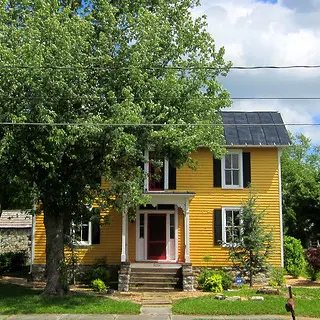
How to Find a Historic House
One way preservationists can express their love for old buildings? Live in one. After all, older and historic homes bring with them craftsmanship, unique details, a sense of history, and (for the handy among us) an opportunity to restore a home to its former glory.
But finding and buying a historic home can be daunting if you’re not familiar with real estate, financing, historic building and district regulations, and inspection procedures. While we have a variety of resources available on how to find, inspect, purchase, and rehabilitate your old-but-new-to-you property, let’s start at the very beginning: with how (and where) to find your historic dream home.

photo by: Rebecca Gale/Flickr/CC BY 2.0
Every historic house is old, but not every old house is historic.
Define what “historic house” really means.
Historic houses are usually designated as significant examples of the cultural or physical developments of that community, state, or the entire nation, either because of their architecture or association with an important historical figure or event. They might also be related by a common theme with other buildings, such as an architectural movement.
Outline what you want in a historic house (and what you can afford).
Develop a wish list of characteristics, including style, number and size of rooms, walkability to amenities, type of yard, or preferred neighborhoods. Decide if you’d like a house that needs rehab, or one that’s already restored. And, of course, figure out your budget; knowing what you can spend both on the house and also on repairs and alternation will help guide your search.
Find a real estate agent who is knowledgeable about historic properties.
An agent familiar with historic properties can be a great asset in your search. To find one, drive around historic neighborhoods and contact agents who are listing houses in the area. Ask other historic home owners whom they recommend. Further gauge the agent’s familiarity with historic homes by asking a few short questions. For example, if the house is in a historic district, ask what regulations apply there and whether the house is listed on a national, state, and/or local register.
Know the limitations of the Multiple Listing Service (MLS) when it comes to historic houses.
Real estate agents often obtain info about houses for sale from the Multiple Listing Service (MLS), which provides basic, useful facts about properties. Just be aware that the MLS doesn’t use the same architectural terms as architects and architectural historians. For example, the term “Colonial” could describe a Georgian, Federal, or Colonial Revival-style house—or it could simply describe a modern home that incorporates features of any of these styles. One workaround is to combine the MLS style name with the date of construction; that might give you a clue about its true architectural style.
Check out real estate ads and websites for historic house listings.
In addition to your local newspapers and real estate tabloids, check out national and regional publications (including shelter magazines) that carry ads for historic houses. Since 2020, the National Trust has partnered with CIRCA Old Houses to connect property sellers with interested buyers via the CIRCA Old Houses website and social media channels. It's a great place to start to browse a wide selection of historic properties for sale and also find real estate agents ready to work with you.

photo by: Matt Turner/Flickr/CC BY 2.0
The Harry S. Truman House in Independence, Missouri.
Contact your State Historic Preservation Office about historic houses near you.
Your State Historic Preservation Office (SHPO) can likely give you a historic property list for your area which you can then compare to the MLS list or share with your agent. The office can also share copies of a specific property’s nomination form for the state or national register, which will give you more info about the appearance, style, and history of the house.
Contact other local organizations and agencies about historic properties in your area.
Your community’s local historic societies, nonprofit preservation organizations, and local government preservation agencies can also lend a hand. Connect with staff at the city’s community development or planning department, too; they can provide lists of locally designated historic properties.
Know the benefits of owning a home listed on the National Register.
Listing a building (or district) on the National Register of Historic Places publicly recognizes the place’s importance to the nation’s culture, history, and/or architecture. It doesn’t interfere with your right to alter or sell the property. And if you plan to use the property to generate income—for example, renting or housing a small business—you might be eligible for federal rehabilitation tax credits.
Tip: State designation recognizes the site’s importance on a state level. State listing doesn’t restrict alterations or demolition of listed properties unless state funds are involved. Contact your SHPO for more information on national and state listings.
Understand what local historic designation means for your historic house.
Most legal power to protect historic places rests chiefly with local government through local historic districts. Their main tool, the preservation ordinance, often includes design guidelines and procedures for any proposed alterations to your home. This review process permits you to make changes to your home as long as they’re in line with the district’s architectural character, and ultimately protects your investment in the long term.
Examine the environment around the historic house you’re considering.
You know what they say: location, location, location. One benefit of many older houses is their proximity to schools, shopping, houses of worship, and public transportation. Evaluate if the area or neighborhood meets your standards for safety, crime rates, and relative stability.
An earlier version of this story was first published on April 2, 2013.
Donate Today to Help Save the Places Where Our History Happened.
Donate to the National Trust for Historic Preservation today and you'll help preserve places that tell our stories, reflect our culture, and shape our shared American experience.



